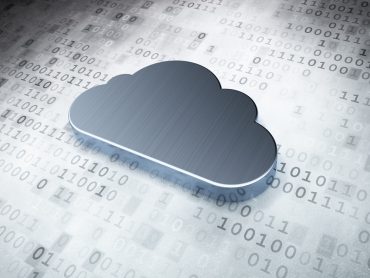
Automating the financial planning process and making it available in real time allows the financial planning and analysis team to spend more time performing actual analysis and scenario planning.
Financial planning has always been critical to businesses in assessing long-term strategies, making a case for M&A, and managing and driving overall business performance. However, despite the importance attached to financial planning and a focus on enterprise digital transformation, in reality, it is a quarterly or bi-annual process of pulling static data from various sources and manipulating it manually in spreadsheets.
Not only is this process time-consuming, but it is also prone to errors and ends up focusing on a historical view of operations. Rather than proactively driving business strategies, these long planning cycles delay decision-making and often make a business less agile and able to respond to a dynamic global economy.
Among many other things, this past year has underscored the business imperative for real-time planning, particularly with the global COVID-19 pandemic, prolonged Brexit negotiations, and protracted U.S. elections. With access to real-time financial data, CFOs and the executive team can drive strategic decision-making when it really matters – in the moment.
See also: How Can Companies Break the Wall to Real Time?
Technology driving change
A new approach for finance teams, continuous planning is a rolling forecast that’s up-to-date with real-time information. Key business drivers, both internal and external, are automatically updated to the planning tool, and the impact of changes in these drivers updates the organization’s forecast in real time. Automation of data collection allows finance teams to focus on modeling and analyzing different scenarios rather than wasting time with manual data processing and reconciliation.
Rapid advances in technology are helping to address this planning overhaul, allowing an organization to adopt a continuous planning mindset. The exponential amount of data collected by businesses, combined with the growing adoption of cloud and process automation, is opening up a range of new capabilities.
For example, forecasts can be updated based on a wide variety of external data or variables – from weather patterns, shifting commodity prices to social media “buzz” from a company’s social feed, or even new regulations or tax laws. Changes in these inputs can then update forecast revenues and margin in real time, providing executives with real-time impact on the bottom line. Equally, internal ERP, EPM, CRM, or other critical enterprise systems can be linked to adjust production and supplier budgets or other variables, ensuring that the rolling forecast shows a holistic view of all elements of a business.
The potential of utilizing the vast amount of enterprise data available can only be realized if that organization possesses the tools that can scale the collection and processing of this data. It also requires the business to clearly understand the drivers of revenue and cost so that what may have previously been a multitude of manual operational and financial models can actually be combined into a single view.
So how do you do that? Well, it requires a number of different elements.
Collaboration between finance and the business
Financial planning cannot be done in a silo.
The financial planning process is often seen as an activity carried out by the finance team which requires the business to supply data and forecasts. These will then be manually combined to produce the annual budget. Often business units may not “buy-in” or have visibility to the outcome of this process and will create their own shadow forecasts in separate systems, disconnected from the overall financial plans. Adopting a continuous planning model requires a close partnership between finance and all areas of the business, whereby key business processes and data sources are fully understood and leveraged, such as a company’s ERP system.
For example, if a business is looking to change the production process to source materials from Argentina, it is critical to make sure that the planning model incorporates feedback from the company’s production manager, outlining what the key variables and inputs are.
What if: the new normal
With data sources controlled through this new collaboration across the business, this improves the accuracy of what-if scenarios.
The key benefit of automating the financial planning process and making it relevant to the business in real time is that it allows the financial planning and analysis team to spend more time performing actual analysis and scenario planning. Scenario planning has been particularly important over the last year, with the impact of COVID-19 and the need for frequent re-forecasting as world events change.
For example, restaurant chains have had to plan for times of lockdown or delivery-only models, chemical companies have had to plan for low oil prices, and housing companies have had to model potential changes in where people will want to live and work in the future. With real-time planning, the impact of COVID-19 can be modeled and analyzed quickly to establish the impact on cash flow and allow executives to make informed decisions backed up by real-time data. Indeed, the speed at which companies are able to adapt to economic shocks like COVID-19 could make all the difference between growing and simply surviving.
With the ability to see the impact on business forecasts, management can make more informed decisions on costs and restructuring or take advantage of other market opportunities. It’s of no surprise then that finance leaders are increasingly being asked for more accurate and flexible budgeting, reporting, and forecasting insights. In fact, some businesses do this on a daily basis as part of their efforts to navigate the COVID-19 crisis. It’s too soon to tell the long-term impact the pandemic will have on businesses, but it does have the potential to transform the way we work, requiring us to move to a more continuous rather than cyclical planning model.
Given the global nature of business, this means there’s a constant stream of opportunities to explore. For example, consider what would happen if materials were sourced from a previously unused territory, production was moved to a different country, or if a particular region’s marketing budget was increased. All have significant implications for cost, revenue, tax, and other variables that need to be analyzed in real time to make informed decisions in the moment.
A planning system that supports this type of scenario analysis is critical to maximizing the opportunities available for financial planning outside the traditional realm of the finance team – and into business operations.
The key to enabling this agile forecasting is to ensure there’s a scalable forecast by extending planning to those on the frontline, in addition to the finance team. This will allow the people who understand what’s happening on the ground to participate.
Then, as their feedback and entries roll up from operational plans into finance plans on a daily basis, the organization will enjoy a more accurate, real-time view of forecasting than ever before.



























